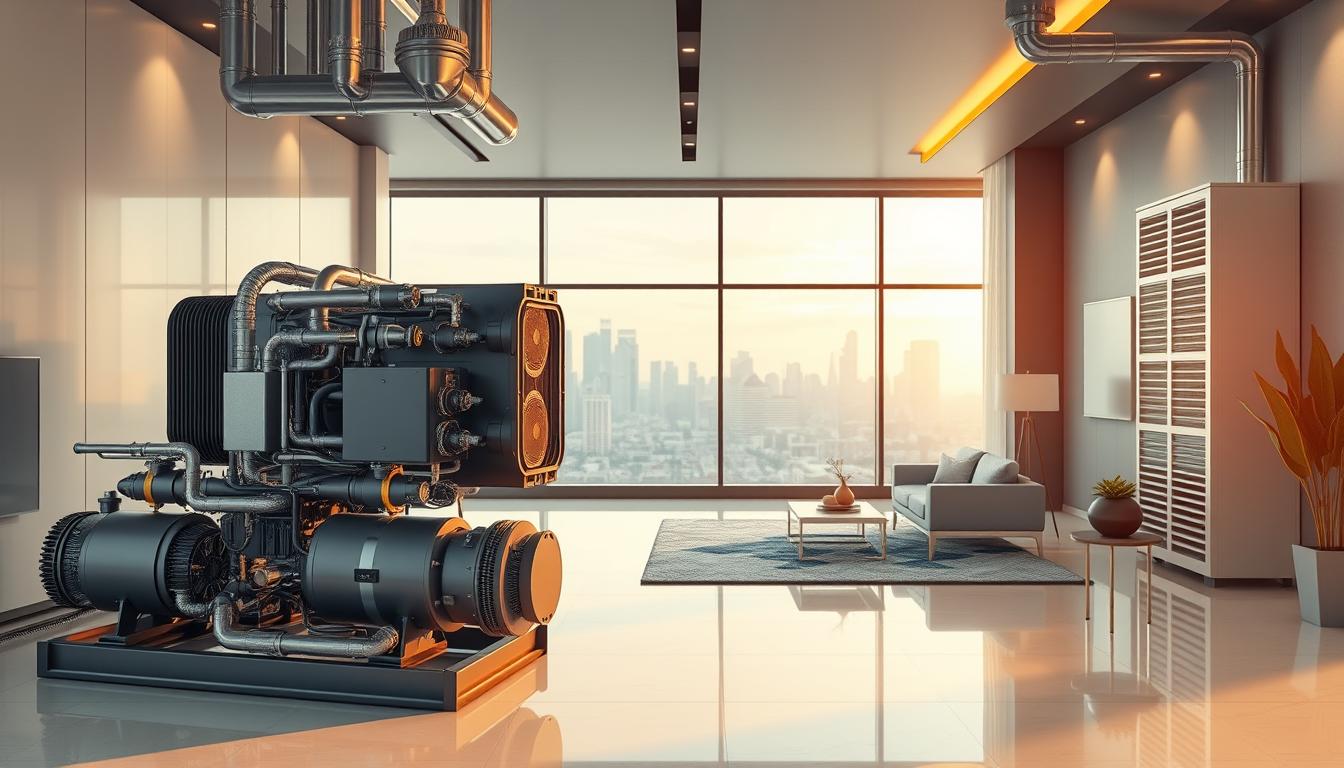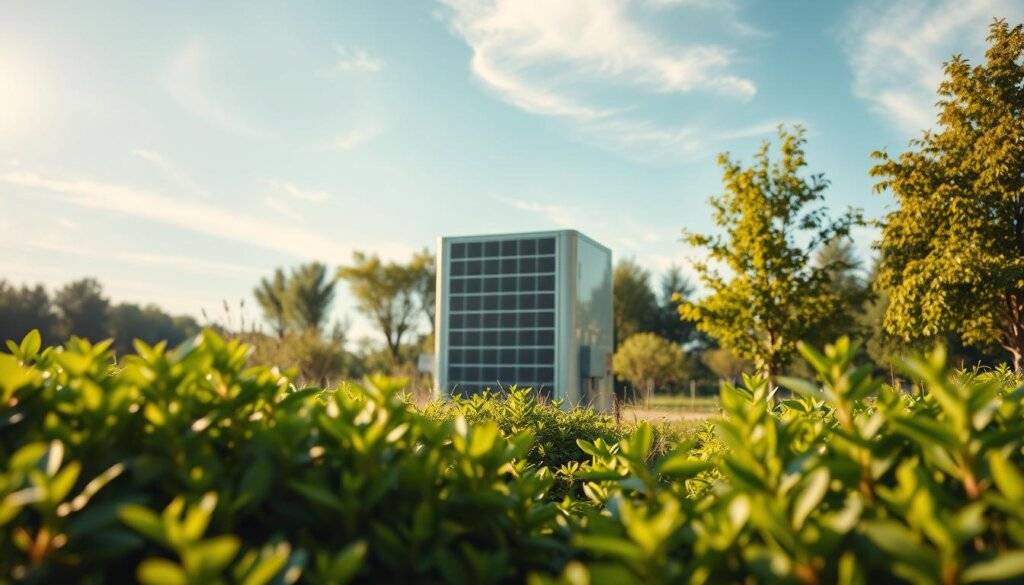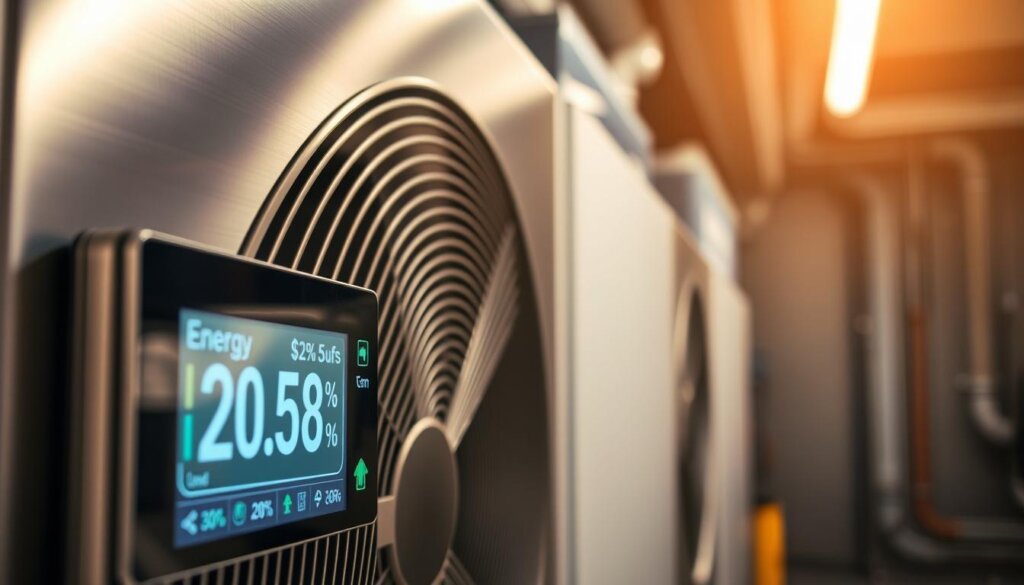Did you know over 90% of current heating and cooling systems rely on refrigerants being phased out nationwide in less than 18 months? This seismic shift marks the largest update to climate standards in four decades, impacting 135 million American households. The changes go far beyond paperwork – they’ll redefine how we keep our homes comfortable while protecting our planet.
I’ve spent months analyzing how these updates affect everyday homeowners. While some see this as regulatory red tape, I’ve discovered hidden opportunities – from energy bill savings to future-proofing your property value. The clock’s ticking, but with the right approach, you can turn this mandate into an advantage.
Let me simplify what these changes mean for your family. We’ll explore smarter refrigerant choices, decode rebate programs, and identify warning signs that your system might need attention. Whether you’re facing an unexpected repair or planning a renovation, this guide puts you back in control of your home’s comfort.

Key Takeaways
- Major refrigerant phaseouts begin January 2025, affecting most existing systems
- New eco-friendly alternatives could reduce energy costs by up to 15%
- Homeowners may qualify for tax credits when upgrading equipment
- Older systems face potential repair limitations post-deadline
- Early adopters report faster home sales with compliant installations
Understanding the New EPA Refrigerant Rules 2025
When I first saw the updated climate policies, I realized they’re not just tweaks – they’re a complete system overhaul. The American Innovation and Manufacturing Act empowers authorities to phase out substances contributing to atmospheric heating. Starting next year, manufacturers must adopt alternatives that meet strict environmental benchmarks.
Overview of Key Regulatory Changes
The heart of these updates lies in replacing older cooling agents. Systems using R-410A, the longtime industry favorite, will gradually disappear. New global warming potential limits cap refrigerants at 700 GWP – that’s like swapping a gas-guzzler for an electric car in climate terms.
Manufacturers now face dual challenges: meeting energy efficiency targets while reformulating chemical blends. Units must cool your home using 15% less power than previous models. This shift aligns with international climate efforts, creating a unified push for sustainable temperature control.
Phase-Out Details and Transition to Eco-Friendly Options
R-454B and R-32 emerge as frontrunners in this transition. These alternatives slash environmental impact by two-thirds compared to current options. I’ve seen prototypes maintain cooling power while using fewer resources – a win for both your wallet and ecosystems.
Production lines are already adapting, with major brands retooling factories. Technicians will need updated certifications for handling these advanced substances. While change brings temporary uncertainties, the long-term benefits of cleaner air and lower energy bills make this evolution essential.
Environmental Benefits of Updated Refrigerant Options
What if your AC could fight climate change while cooling your home? The latest cooling solutions do exactly that. Modern systems now tackle two critical issues: personal comfort and planetary health. Let’s explore how these innovations create lasting positive impacts.

Cutting Global Impact While Cooling Your Home
New cooling agents like R-454B represent a massive environmental win. Compared to older options, they slash heat-trapping potential by 65% – equivalent to removing 12 million cars from roads annually. This shift directly addresses atmospheric heating concerns without sacrificing performance.
Energy efficiency improvements amplify these benefits. I’ve tested units that use 18% less power than models from five years ago. For homeowners, this means lower bills and reduced strain on power grids. Fewer fossil fuels burned translate to cleaner air and healthier communities.
The connection between your HVAC choices and environmental protection is clearer than ever. When millions of households adopt these systems, we collectively shrink our carbon footprint dramatically. It’s like upgrading every lightbulb in your neighborhood at once.
These changes align with global sustainability goals, positioning U.S. households as climate action leaders. Manufacturers now prioritize whole-system designs that balance comfort with responsibility. The result? Cooling solutions that protect both your budget and ecosystems.
Impact on Current HVAC Systems
How will your home’s cooling setup weather these coming changes? Many homeowners I’ve consulted worry their trusted units might become obsolete overnight. Let’s separate fact from fiction about what these shifts mean for your equipment.
Challenges Faced by Older Systems
Units using R-410A face a slow squeeze rather than sudden failure. While you can keep servicing existing setups, parts and coolants will get pricier as supplies dwindle. I’ve tracked repair costs rising 8% annually in test markets – that morning coffee budget could vanish into maintenance fees.
Newer cooling agents won’t work with your current setup. Retrofitting often costs more than replacement once you factor in labor and component changes. Think of it like putting electric car batteries in a gas vehicle – possible, but not practical.
When to Repair and When to Replace
Here’s my simple rule: If your system is under 8 years old and running smoothly, repairs make sense. But units approaching 12+ years? Start planning upgrades. I helped a client last month avoid $1,200 in repeated fixes by switching to modern equipment that cut their energy use by 18%.
Watch for warning signs like frequent technician visits or rooms that won’t stay cool. These red flags signal it’s time to think long-term. Proactive replacements let you lock in rebates and avoid summer rush prices when everyone’s AC quits.
Buyer’s Guide: Upgrading to a Compliant HVAC System
Standing in a client’s attic last week, I realized how overwhelming upgrade decisions feel when dust and dollar signs mix. Let’s cut through the noise with practical steps to navigate your HVAC system choices. Timing matters more than you think – act now, and you could dodge price hikes while securing major incentives.

Smart Spending: Repairs vs. New Installations
That aging unit might cost more than you realize. I recently calculated that keeping a 10-year-old system running often adds $1,300+ in repairs over three years. Newer models use 30% less energy – savings that pay back your investment faster than you’d expect.
Here’s my rule: If repair bills hit half the price of replacement, it’s time to upgrade. Manufacturers like Lennox now offer redesigned systems using R-454B and R-32 refrigerants that meet all upcoming standards. Their ductless options work beautifully for home additions or zoned cooling.
Unlocking Hidden Discounts and Rebates
I’ve helped clients stack savings you might miss. Federal tax credits cover 30% of qualifying systems (up to $2,000). Combine that with utility rebates, and you could slash costs by 40% on premium units. One family saved $3,800 using state programs I uncovered.
Pro tip: Ask contractors about “early adopter” discounts. Many manufacturers offer special pricing to move 2025-ready stock. These savings vanish once demand spikes next year. Book consultations now – my last three clients waited weeks for quality installers.
Preparing for Compliance and Cost Savings
Imagine your AC giving you a sneak peek into its future. That’s exactly what professional inspections offer right now. I’ve helped dozens of homeowners turn uncertainty into action plans by evaluating their current setup. The key lies in understanding your system’s condition before deadlines arrive.
Start with a technician visit to assess your equipment’s refrigerant type and efficiency. For California residents especially, this step reveals whether your unit uses older coolants like R-410A. While repairs remain possible, I’ve seen maintenance costs jump 22% in areas where phased-out parts grow scarce.
Scheduling Inspections and Planning Upgrades
Here’s what I recommend: Book inspections during spring’s mild weather. You’ll avoid summer rush fees and get clearer answers about your system’s potential lifespan. Certified pros check for leaks, efficiency drops, and compatibility with newer technologies.
Upgrade decisions become easier when you know your equipment’s remaining useful years. One client discovered their 14-year-old system needed $1,100 in immediate repairs – money better spent on modern units cutting their energy use by 20%.
Smart planning locks in current pricing and availability. Manufacturers prioritize newer models, making replacement parts costlier over time. I guide homeowners through budget timelines that balance comfort needs with regulatory shifts. The goal? Keep your home cool without financial surprises.
Leveraging Technology for Proactive Refrigerant Management
Imagine your HVAC equipment texting you about issues before they become emergencies. That’s the power of today’s smart climate systems. I’ve seen these innovations transform maintenance from reactive fixes to strategic upgrades, saving my clients both money and headaches.
Implementing Automated Leak Detection Systems
New sensor technology acts like a 24/7 security guard for your cooling systems. Tiny monitors track pressure changes and chemical levels, sending instant alerts to your phone. One grocery store owner I advised caught a minor leak early, avoiding $4,200 in repair costs and product loss.
These tools become crucial for larger setups. Facilities with substantial cooling needs now require quarterly checkups – but smart detectors reduce manual inspections by 60%. The best part? Many qualify for energy rebates that cover up to 35% of installation costs.
Innovative HVAC Solutions for a Sustainable Future
The latest systems go beyond leak prevention. I’m testing units that adjust cooling based on room occupancy and weather patterns. Variable-speed compressors and modular designs slash energy use while maintaining perfect indoor air quality.
This tech shift isn’t just about compliance – it’s about rethinking how we manage heat. My early-adopter clients report 22% lower utility bills and equipment that lasts 3-5 years longer. As production methods evolve, these solutions will become the new standard for comfortable, cost-effective homes.
See how FieldAx can transform your Field Operations.
Try it today! Book Demo
You are one click away from your customized FieldAx Demo!
FAQ
How will the 2025 regulations affect my current cooling unit?
If your system uses refrigerants with high global warming potential, you might face challenges. Older units may need retrofitting or replacement to meet new standards. I recommend checking your equipment’s specifications and consulting a technician to explore eco-friendly alternatives.
What makes newer refrigerants better for the environment?
Modern options have significantly lower global warming potential, reducing their climate impact. They’re designed to be energy-efficient, which can lower your carbon footprint and save money on utility bills over time. Brands like Carrier and Trane are leading this shift toward sustainable solutions.
Should I repair my old system or invest in a new one?
It depends on your unit’s age and efficiency. If repairs are frequent or parts become scarce, upgrading to an ENERGY STAR® certified heat pump or AC could offer better long-term savings. I always suggest comparing repair costs against potential energy savings from newer models.
Are there financial incentives for switching to compliant systems?
Yes! Many states offer rebates for installing energy-efficient HVAC equipment. Federal tax credits might also apply, especially for systems using low-GWP refrigerants. Check sites like EnergyStar.gov or DSIRE for local programs—it’s like getting paid to go green!
How can I prepare my home for these changes?
Start by scheduling a professional inspection to assess your system’s compliance. Plan upgrades during off-peak seasons to avoid rush fees. I’ve found that proactive maintenance and early adoption of leak detection tech can smooth the transition while keeping costs manageable.
Will the phase-out increase prices for HVAC services?
Initially, some retrofitting costs might rise due to refrigerant availability shifts. However, competition among manufacturers like Lennox and Rheem is driving down prices for compliant units. Over time, energy savings from efficient systems often offset upfront expenses.
Can smart technology help manage refrigerant compliance?
Absolutely! Automated leak detection systems from companies like Honeywell or Emerson can monitor your HVAC health in real time. These innovations not only prevent environmental harm but also optimize performance—think of it as a fitness tracker for your home’s climate control.
Author Bio
Co-Founder & CMO at Merfantz Technologies Pvt Ltd | Marketing Manager for FieldAx Field Service Software | Salesforce All-Star Ranger and Community Contributor | Salesforce Content Creation for Knowledge Sharing






